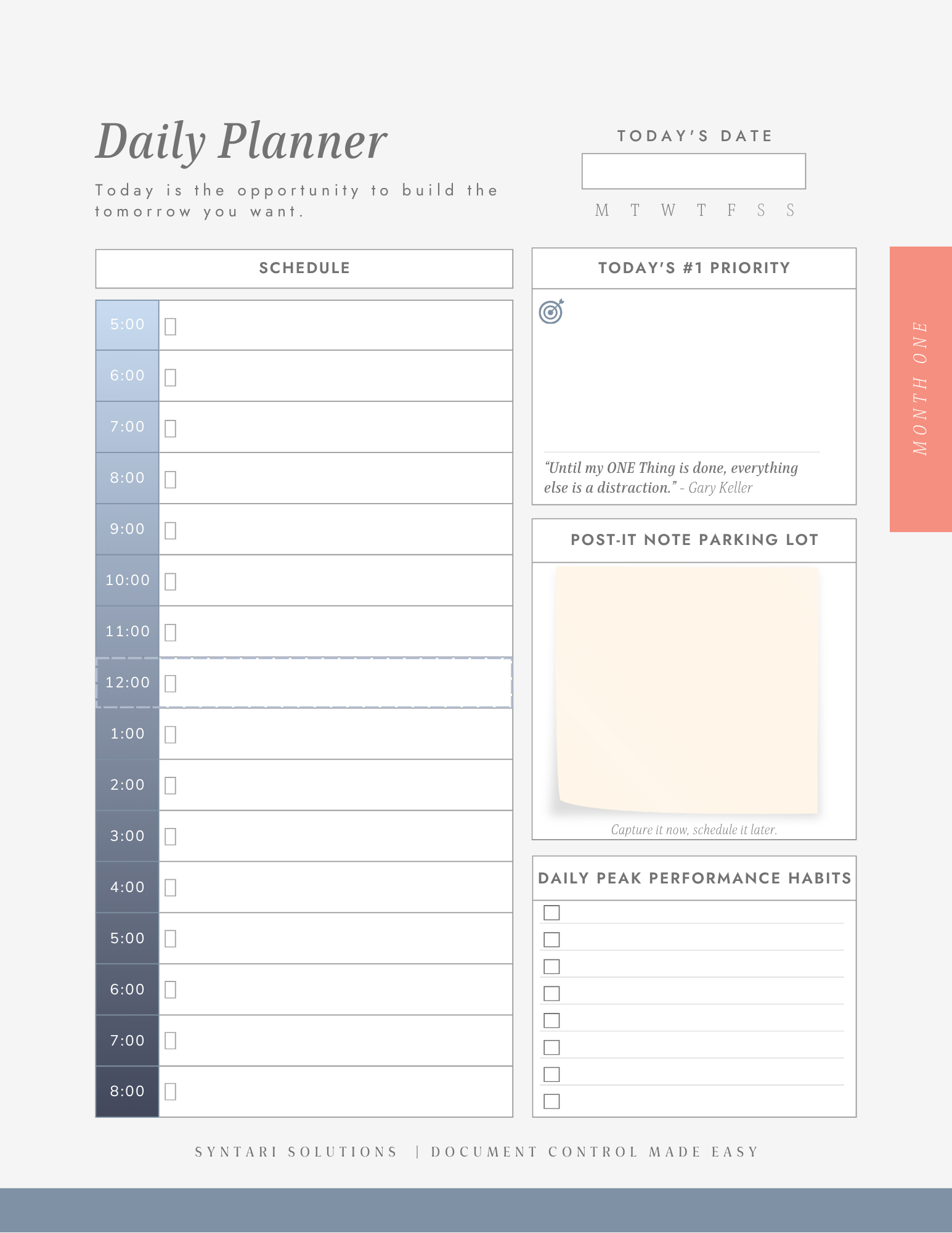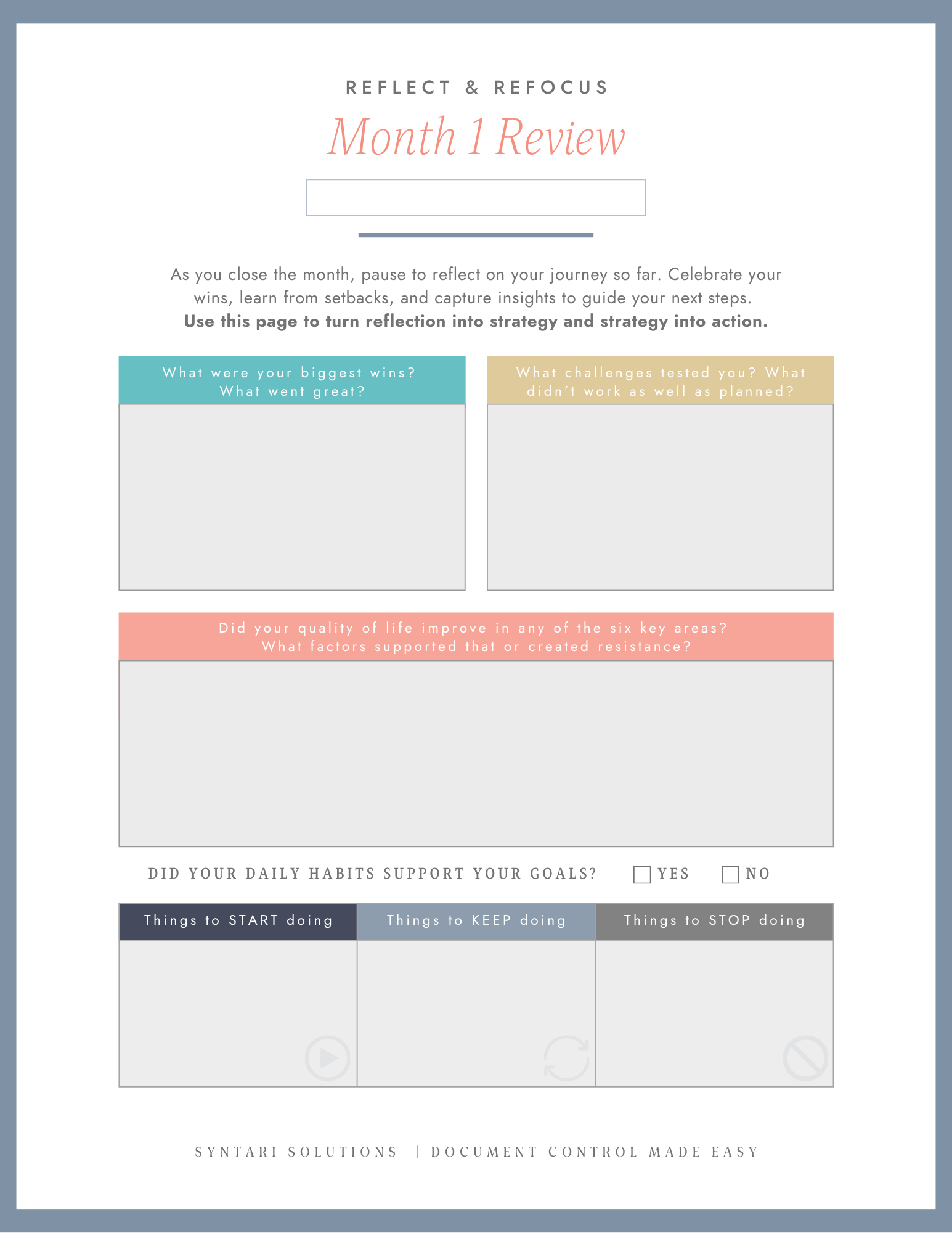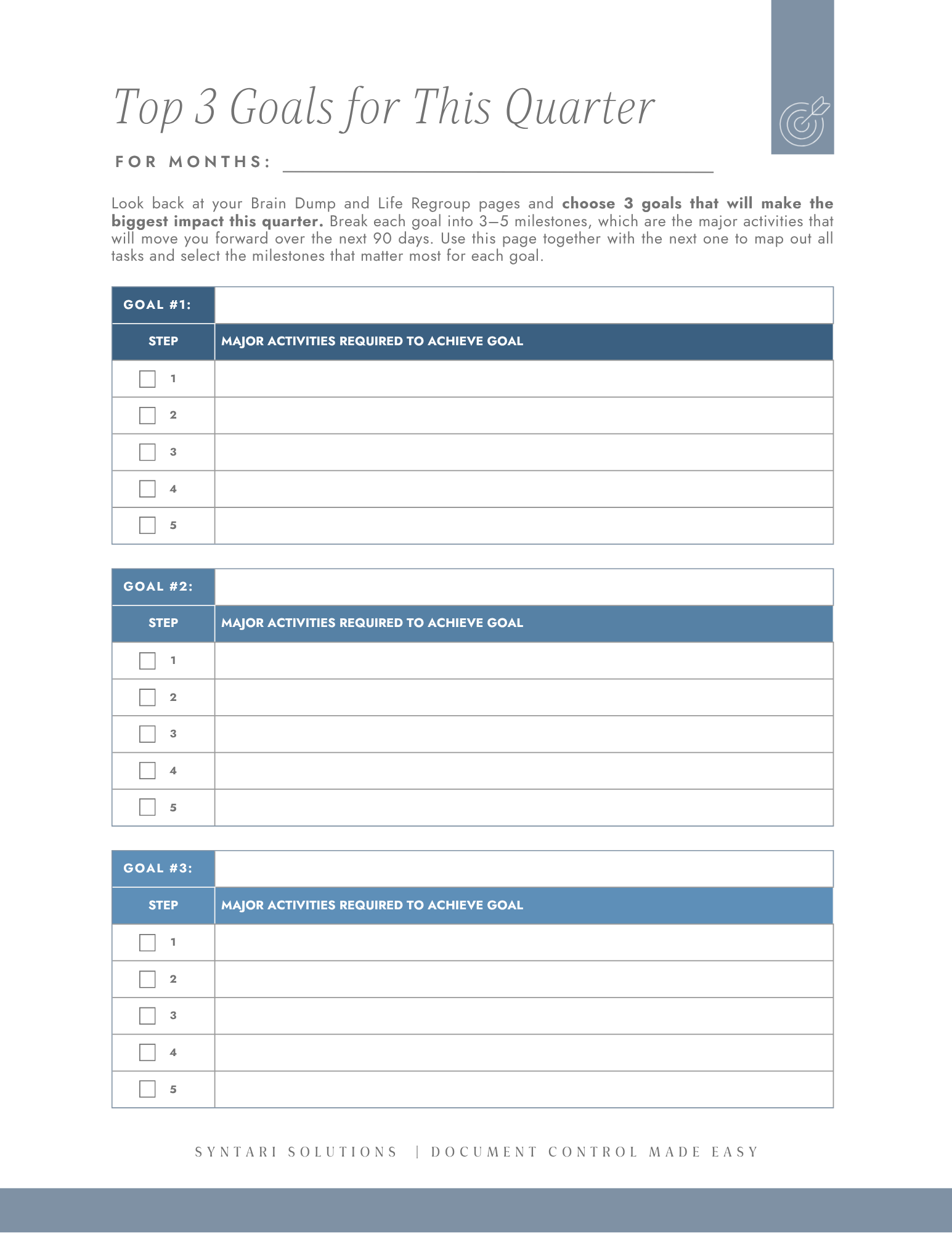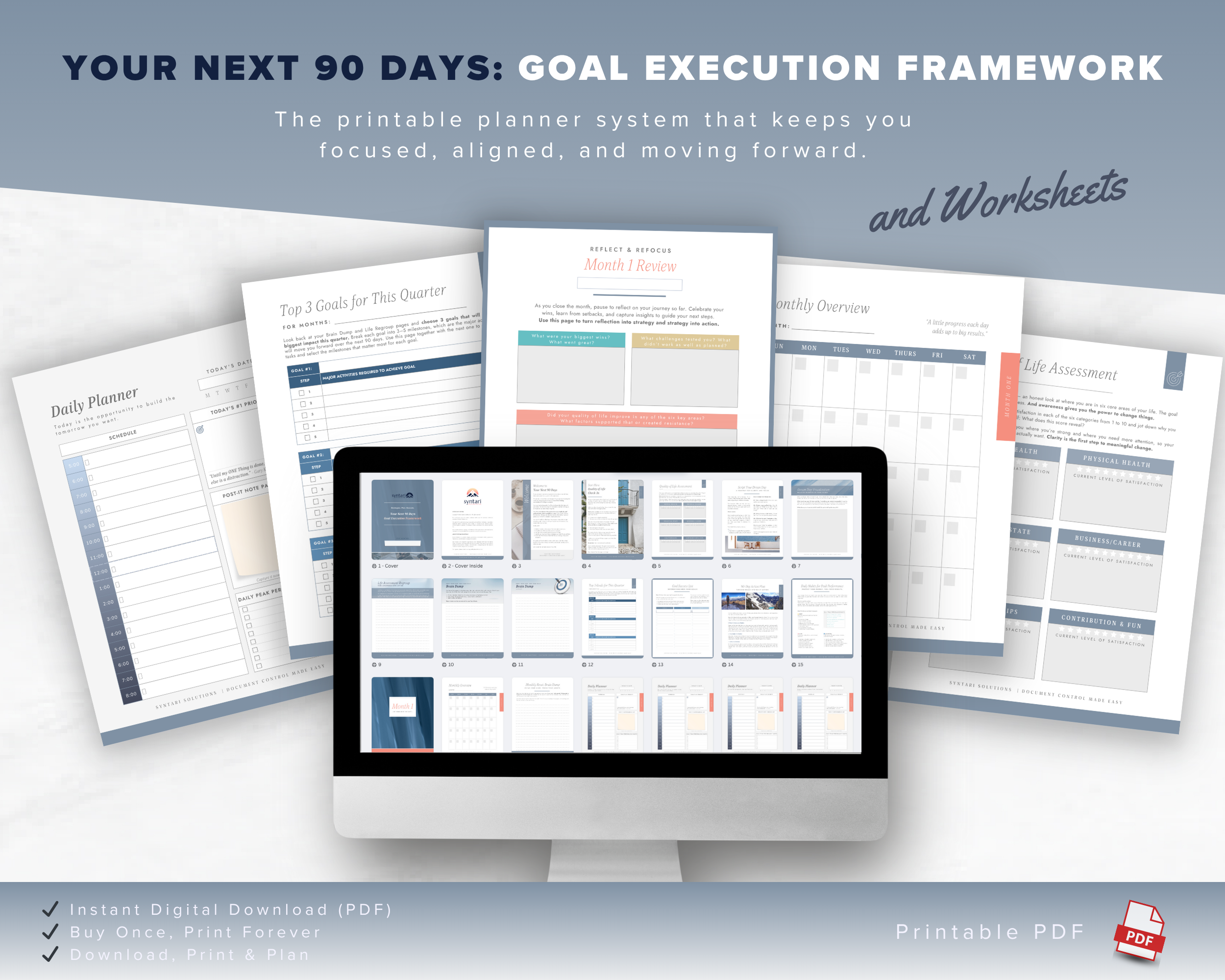Goal Setting The Easy Way (Templates & 4 Traps to Avoid)
How to Achieve Your Long-Term Goals in 90 Days
When the new year rolls around, most of us are filled with optimism and determination to fulfill our goals and aspirations.
Yet, research shows that a staggering 80% of New Year's resolutions are abandoned by February. However, it doesn't have to be this way!
Keep reading to find out the 4 traps that are holding you back and how to streamline your goal setting so it's simplified, organized, and achievable with a strategic approach.
4 Traps to Avoid When Goal-Setting
As we undertake the journey of goal-setting, it's important to be aware of the potential pitfalls that often derail our progress. Overcoming these obstacles is key to staying committed and achieving our aspirations. In the following sections, we will delve into four common traps that you should avoid when setting your goals. Understanding these will help you not only develop a more effective strategy but also maintain motivation and persistence throughout your journey.
Trap #1 - Lack of a Structured Approach
One of the major roadblocks many people face when setting goals is a lack of structure (aka, an action plan).
Without a clear pathway from where you are to where you want to be, it's easy to get lost in the enormity of your aspirations.
This is where a structured approach with strategic goals comes into play. Breaking down your goals into smaller, manageable tasks and setting clear milestones can make the journey to reaching your goals less daunting and more manageable.
Try: A Daily To-Do List
A daily to-do list helps in creating a structure for achieving goals. If your goal is to learn a new language, instead of vaguely planning to "study more," create a to-do list with specific tasks that you review on a daily basis.
For example, 'complete one lesson in your online course, practice with a language learning app for 30 minutes, and revise vocabulary flashcards.'
These examples showcase how a structured approach can help in avoiding overwhelm and keeping track of your progress, thereby making the journey to reaching your goals less daunting and more manageable.
Trap #2 - Not Setting Measurable Goals
Another common pitfall is setting goals that are too vague or not quantifiable. While it's great to dream big, not breaking those dreams down into action steps can lead to overwhelm and eventually burnout.
This is why it's important to set realistic expectations for your goals, and this can be done by reverse engineering your goals into a 90-day action plan with clear, manageable steps.
Measurable goals involve clear indicators of progress and success. Instead of a vague goal like "I want to lose weight," a SMART goal would be "I aim to lose 10 pounds in 3 months by exercising 4 times a week and reducing sugar intake." This not only provides a clear target for achievable goals, but also allows for tracking progress over time.
Try: The SMART Goals Framework
SMART Goals = Strategic Goals, and the SMART Goal framework is the most effective way to set and achieve your goals. SMART stands for Specific, Measurable, Achievable, Relevant, and Time-Bound.
Specific: Instead of "I want to read more," a specific goal would be "I want to read 12 new books this year."
Measurable: This makes your progress trackable. For example, "I will run three times a week for 30 minutes."
Achievable: Your goals should challenge you, but they should also be realistic and attainable. A vague and potentially unattainable goal would be "I will become a millionaire in a year." A more attainable goal might be, "I will save 20% of my salary each month."
Relevant: Your goals should align with your broader life objectives. If you're aiming to lead a balanced life, a relevant goal might be "I will dedicate one hour each day to relaxation or hobbies."
Time-Bound: Setting a time frame creates a sense of urgency. Instead of "I will learn Spanish," a time-bound goal could be, "I will complete a beginner's Spanish course within six months."
The SMART Goals framework enhances clarity with attainable goals by incorporating timelines and specific details, thereby laying a robust foundation for successful goal setting and attainment.
Trap #3 - Not Monitoring Progress
Even the best plans fail without consistent follow-through, and a lack of monitoring can stagnate your growth and diminish motivation.
Regularly monitoring your progress is a great way to understand what's working and what needs improvement. These check-ins and reviews can help you celebrate your wins, understand your challenges, and strategize your next steps.
Try: Monthly Reviews
Conducting reviews on a monthly basis is an excellent technique for monitoring progress toward your goals. Suppose one of your personal goals for the year is to improve your financial habits and save more money.
A monthly review in this context might look like this:
At the beginning of each month, review your financial goal and the specific steps associated with it. Look at your savings account and compare the current balance with the target you've set for the month.
Measure the progress made, noting any successes and setbacks encountered. Further, consider any unexpected expenses that might have hindered your progress.
Next, look at your spending habits over the past month. Do you notice any patterns or repeated unnecessary expenditures? Could you make better purchasing decisions in the future? Understanding the nuances of your spending habits can help you adjust and prioritize your budget more effectively.
Lastly, based on your findings, adjust your action plan for the next month. Perhaps you need to cut back on dining out or find ways to earn additional income. Or, maybe you're progressing well and can maintain your current strategy.
Remember, the key to a successful monthly review is not just about tracking progress—it is about learning, adapting, and improving. It's a time to appreciate your hard work, reassess your strategy, and continue moving forward with renewed determination.
Trap #4 - Overwhelmed by Year-long Goals
Feeling overwhelmed by year-long goals that seem distant and everlasting can swiftly derail your progress.
Instead, try breaking down these larger aspirations into smaller, short-term goals. These micro-goals are manageable, keep you motivated, and bring you closer to your ultimate objectives in a structured manner.
The Solution: 90-Day Goal Setting
We often misjudge our capabilities - overestimating our daily productivity while underestimating our yearly potential.
We all have dreams and goals, but more often than not, the journey towards achieving them can seem daunting. Try adopting a 90-day approach instead.
Suppose your goal is to start your own business. Instead of getting overwhelmed by the enormity of the task, break it down into themes over 90 days.
For example, in the first month, you might focus on market research and product development. In the second month, your focus could shift to branding and website design. And in the final month, you may concentrate on marketing strategies and launch preparation.
Achieve Your Goals Faster with “Your Next 90 Days: Daily Planner”
This is where the Your Next 90 Days Planner and Goal Setting Worksheets come into play, acting as your roadmap to success.
This Planner and Goal-Setting Process will help you get clear on what you want, assess your satisfaction level in key areas of your life, make the process less daunting, and keep you on track with achieving your goals.
How Our Goal-Setting Process Works
Step 1: Assessment and Vision Planning
Your journey begins with introspection.
Most people wander in their lives, frustrated and focused on what they don't want, and bear no clear vision of what they do want. This lack of clarity becomes their biggest stumbling block.
How can you plan for a future that is blurry and undefined? Our Life Assessment Worksheets help you envision the future want so you can identify and focus on neglected areas that need improvement.
Step 2: Goal-Setting Worksheets
After self-reflection, it's time to set goals. Our step-by-step guide and goal worksheets will help you identify and set your top three goals for Your Next 90 Days and the major activities that need to be achieved to accomplish those goals. This helps establish a clear vision with actionable steps to move the needle forward.
Step 3: Reverse Engineer Your Goals
By this stage, you've already identified your top three goals and their associated major activities for the next quarter. Now, it's time to break these activities down into smaller, more manageable tasks that can be easily plotted into your Monthly Planners and Daily Schedules. This is a method known as reverse engineering and helps keep your eye on the prize on a daily basis.
Step 4: Monthly Review
At the end of each month, it's time to reflect and refocus, celebrate your wins, acknowledge your progress, and strategize for the upcoming month. This crucial step keeps you on track and moving forward so you can turn your clear goal into a reality.
Why Choose Your Next 90 Days: Daily Planner?
Now, you could figure this out on your own using the steps above as a guide, or you could simplify the process by grabbing a copy of Your Next 90 Days: Daily Planner and Goal Worksheets so you can:
💫 Get clear on what you really want
💫 Turn your upcoming year into your best one yet
💫 Make achieving your goals less daunting
💫 Turn your goals into a 90-day plan of action with clear, manageable steps
💫 Reflect on your progress, celebrate your wins, and stay on track with achieving your goals!
This workbook is more than a planning aid; it’s your personal tool for setting strategic goals and accomplishing them faster.
It offers three months of undated daily schedules, making it possible to start your journey at any time so you can refresh your focus, reassess your objectives, and realign your actions every quarter.
If you're ready to take your personal goals, business goals, career goals, professional development, and life goals to the next level, then grab your copy of Your Next 90 Days Planner today!
Witness the transformation of strategic planning and become a testament to personal growth and achievement 🎯
Found this post helpful?
The biggest compliment I can receive is a share. Share this post with a friend or colleague to help our DC community grow!






